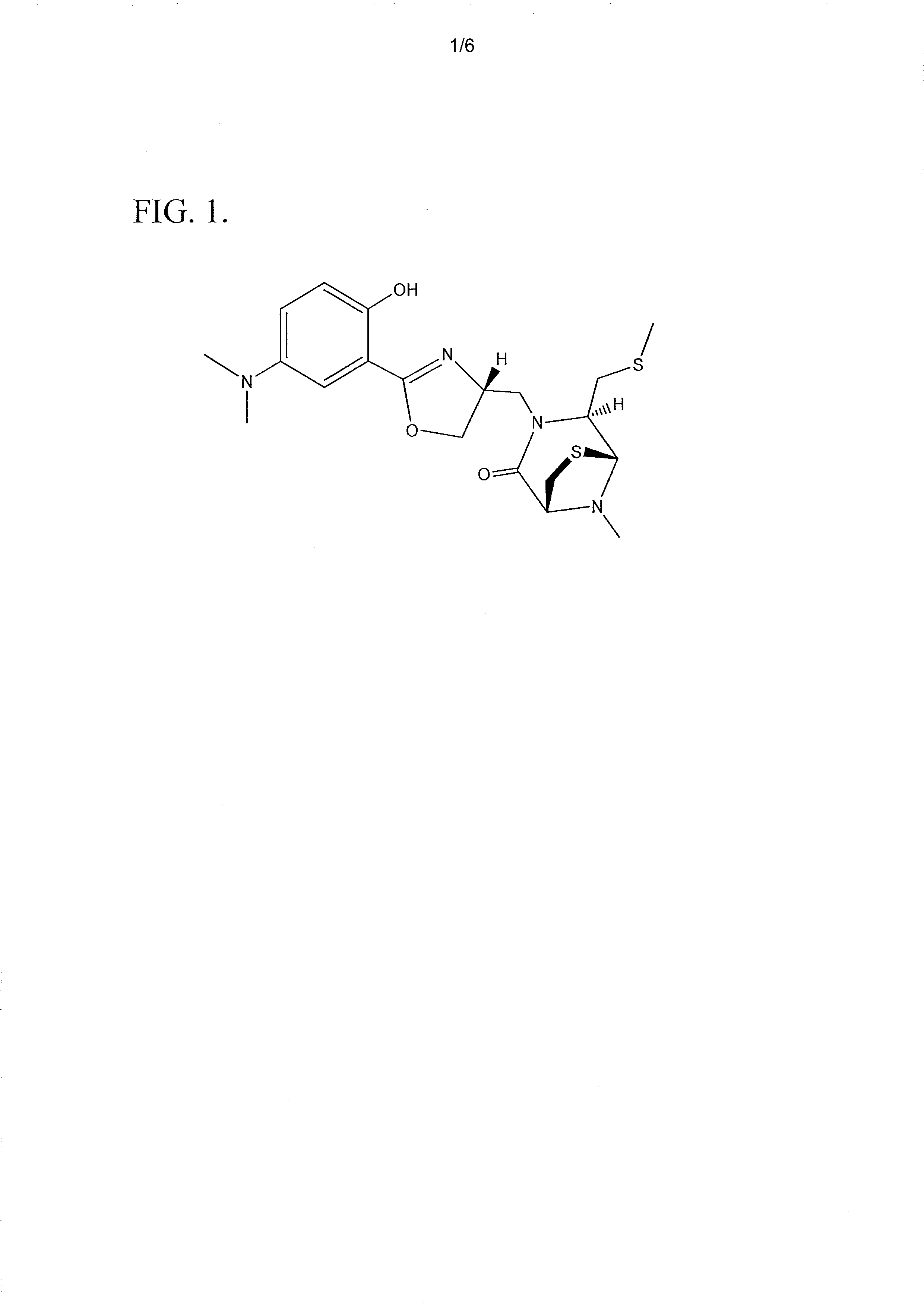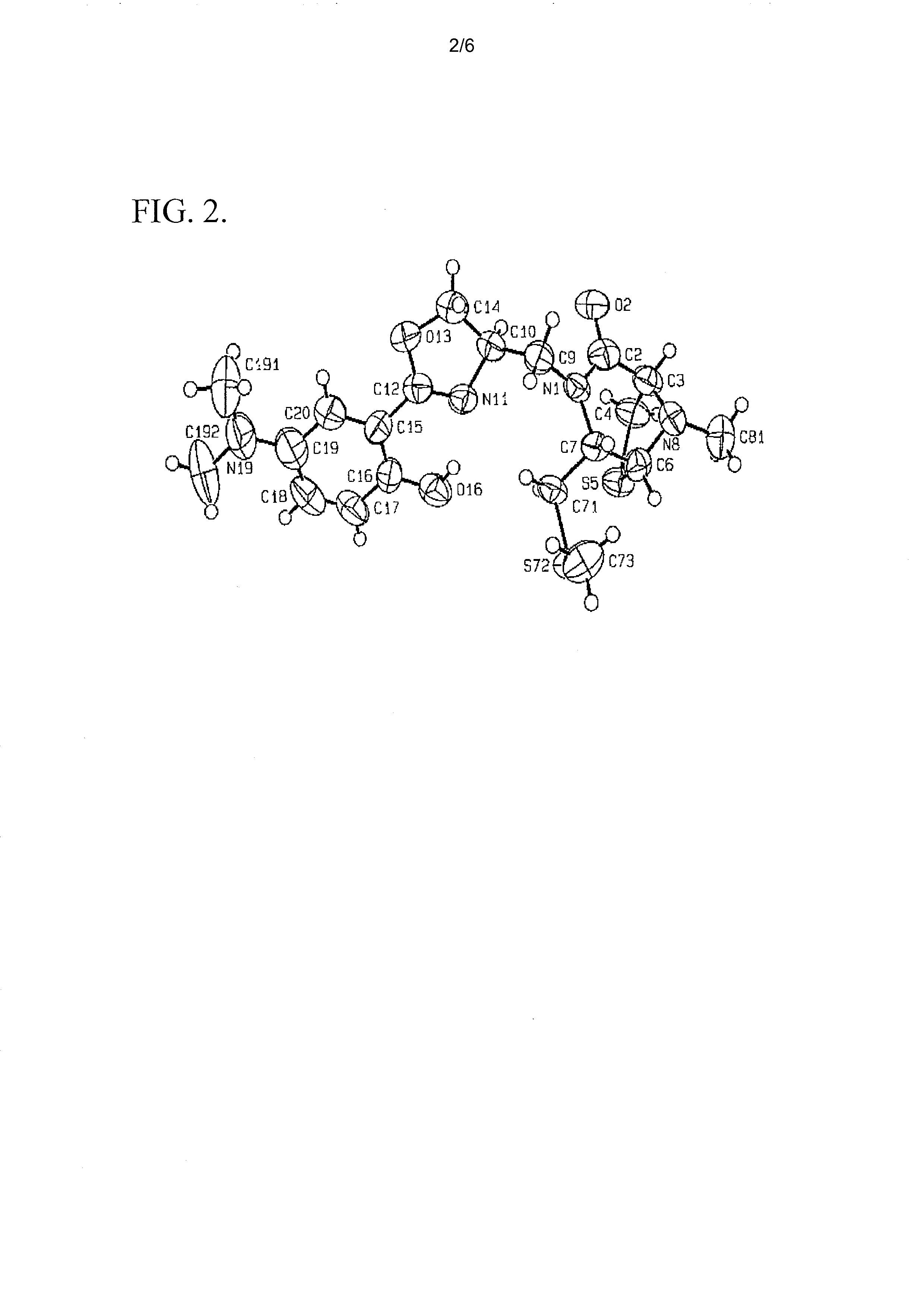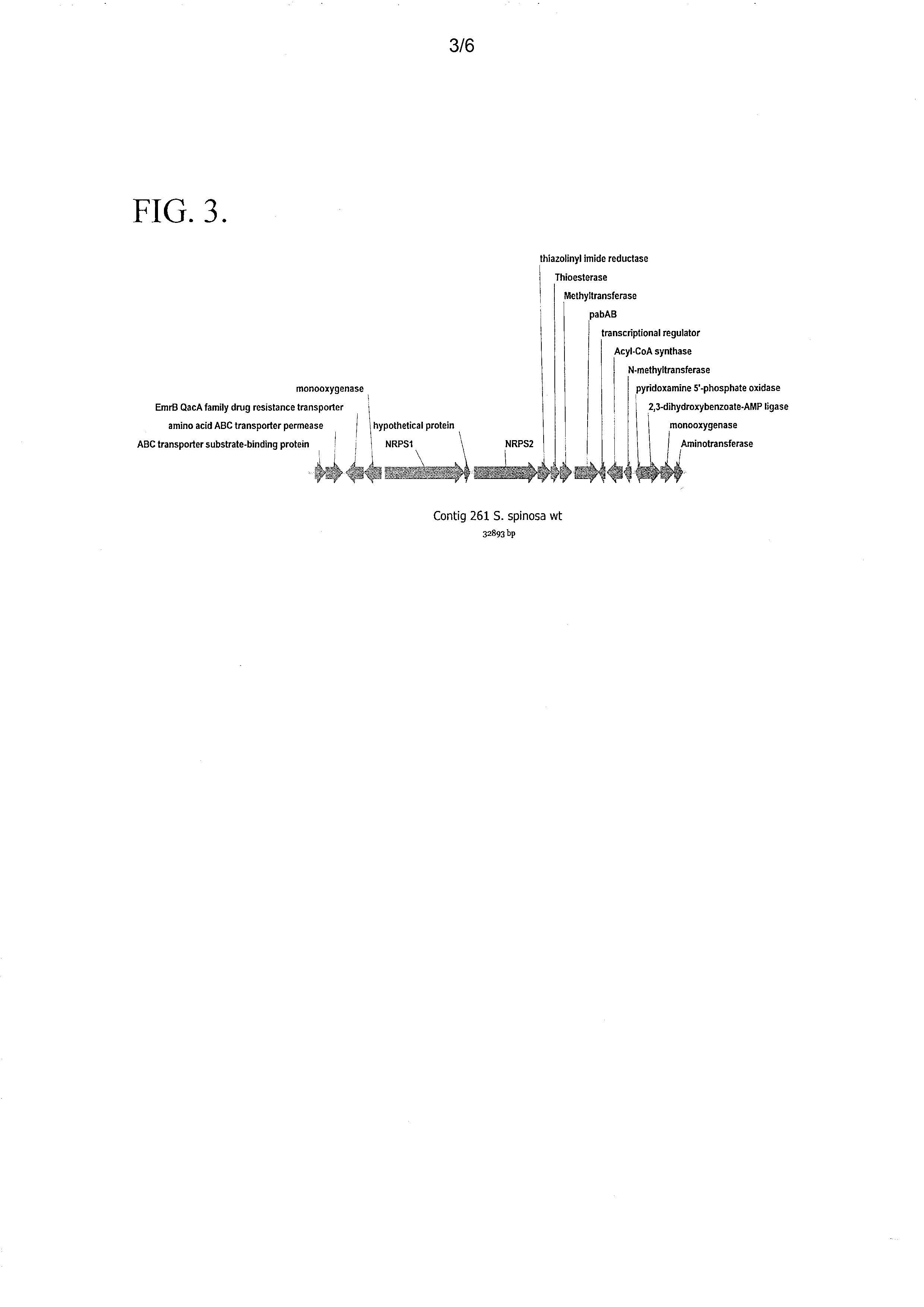Identification and characterization of the spinactin biosysnthesis gene cluster from spinosyn producing saccharopolyspora spinosa
a technology of spinosyn and spinosa, which is applied in the field of identification and characterization of the spinosyn biosynthesis gene cluster from spinosyn producing saccharopolyspora spinosa, can solve the problem of large fermentation volume and other problems
- Summary
- Abstract
- Description
- Claims
- Application Information
AI Technical Summary
Benefits of technology
Problems solved by technology
Method used
Image
Examples
example 1
The Identification and Characterization of the Spinactin Molecule from S. Spinosa
[0069]Spinactin is a sulfur-containing compound which was identified from an S. spinosa fermentation culture. FIG. 1 illustrates the chemical structure of spinactin. This structure was determined using NMR spectroscopy and verified with X-ray crystallography. See FIG. 2.
[0070]A fermentation culture of S. spinosa from strain NRRL 18395 was propagated using the fermentation protocol described in Strobel and Nakatsukasa (1993) J. Ind. Microbiol. Biotechnol. 11(2):121-7. Liquid chromatographic analysis identified the presence of a previously undetected secondary metabolite having a characteristic UV spectrum, with λmax=227 and 358 nm. The secondary metabolite was isolated using the following procedure. The technical material (3 kg) from a S. spinosa fermentation culture was slurried in methanol / water (1:1) and filtered. The filtrate was found to contain an enriched quantity of the previously undetected sec...
example 2
Identification and Characterization of the Spinactin Biosynthetic Gene Cluster
[0074]Based on the structural resemblance of the 2-hydroxyphenyloxazoline moiety of spinactin as compared to the 2-hydroxyphenyloxazoline moiety of mycobactin A, it was hypothesized that both molecules are produced by similar biosynthetic pathways. The involvement of the mycobactin A biosynthetic gene cluster and the phenyloxazoline synthase mbtB gene (mbtB) in the biosynthesis of the 2-hydroxyphenyloxazoline moiety of mycobactin A was characterized in Quadri et al. (1998) Chemistry & Biology 15:631-45. The amino acid sequence of phenyloxazoline synthase mbtB (Accession No: ZP—06505539) from the mycobactin gene cluster of Mycobacterium tuberculosis strain 02—1987 was used to screen, in silico, the genomic sequence obtained from the S. spinosa wild type strain (NRRL 18395). The resulting BLAST search identified the presence of a putative gene sequence from the S. spinosa genome which encoded an amino acid s...
example 3
Screening and Identification of Cosmid Clones Containing the Spinactin Gene Cluster from a S. spinosa Genomic Cosmid Library
[0075]A genomic cosmid library from S. spinosa (U.S. patent application Ser. No. 13 / 100,202) was screened to identify cosmid clones which contained the thiazolinyl imide reductase gene. The thiazolinyl imide reductase gene is located downstream of the NRPS1 gene, and was characterized as a putative member of the spinactin gene cluster which encodes an enzyme that is non-essential for the biosynthesis of spinosyn A / D. This gene was used to identify cosmid clones that could be modified by deleting a 7.6 Kb fragment which contains the spinactin gene cluster. The resulting cosmid clones were then used to generate S. spinosa knock-out strains.
[0076]A 412 bp fragment of the thiazolinyl imide reductase gene was prepared with a PCR digoxigenin (DIG) labeling kit. The 412 bp (SEQ ID NO:3) fragment was PCR amplified using a forward primer (SEQ ID NO:4) and a reverse prim...
PUM
| Property | Measurement | Unit |
|---|---|---|
| Tm | aaaaa | aaaaa |
| temperature | aaaaa | aaaaa |
| temperature | aaaaa | aaaaa |
Abstract
Description
Claims
Application Information
 Login to View More
Login to View More - R&D
- Intellectual Property
- Life Sciences
- Materials
- Tech Scout
- Unparalleled Data Quality
- Higher Quality Content
- 60% Fewer Hallucinations
Browse by: Latest US Patents, China's latest patents, Technical Efficacy Thesaurus, Application Domain, Technology Topic, Popular Technical Reports.
© 2025 PatSnap. All rights reserved.Legal|Privacy policy|Modern Slavery Act Transparency Statement|Sitemap|About US| Contact US: help@patsnap.com



